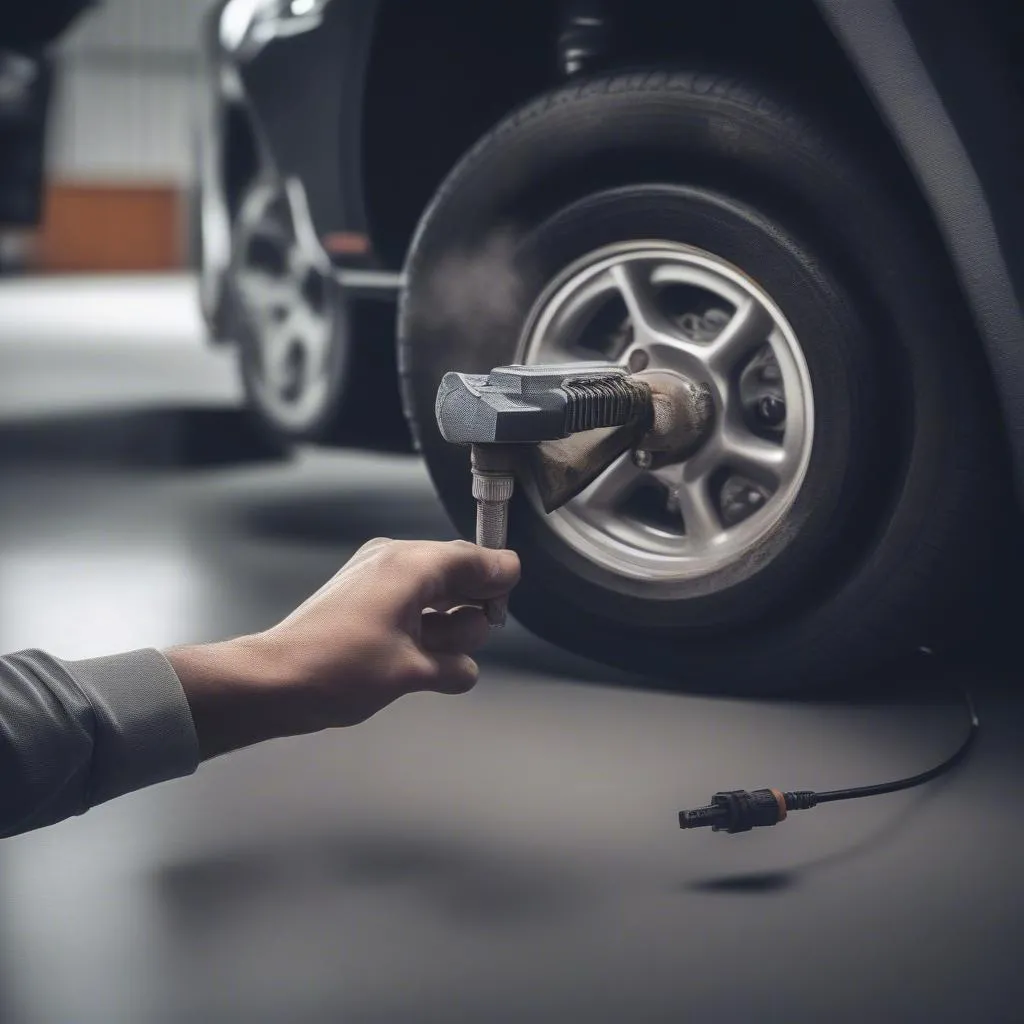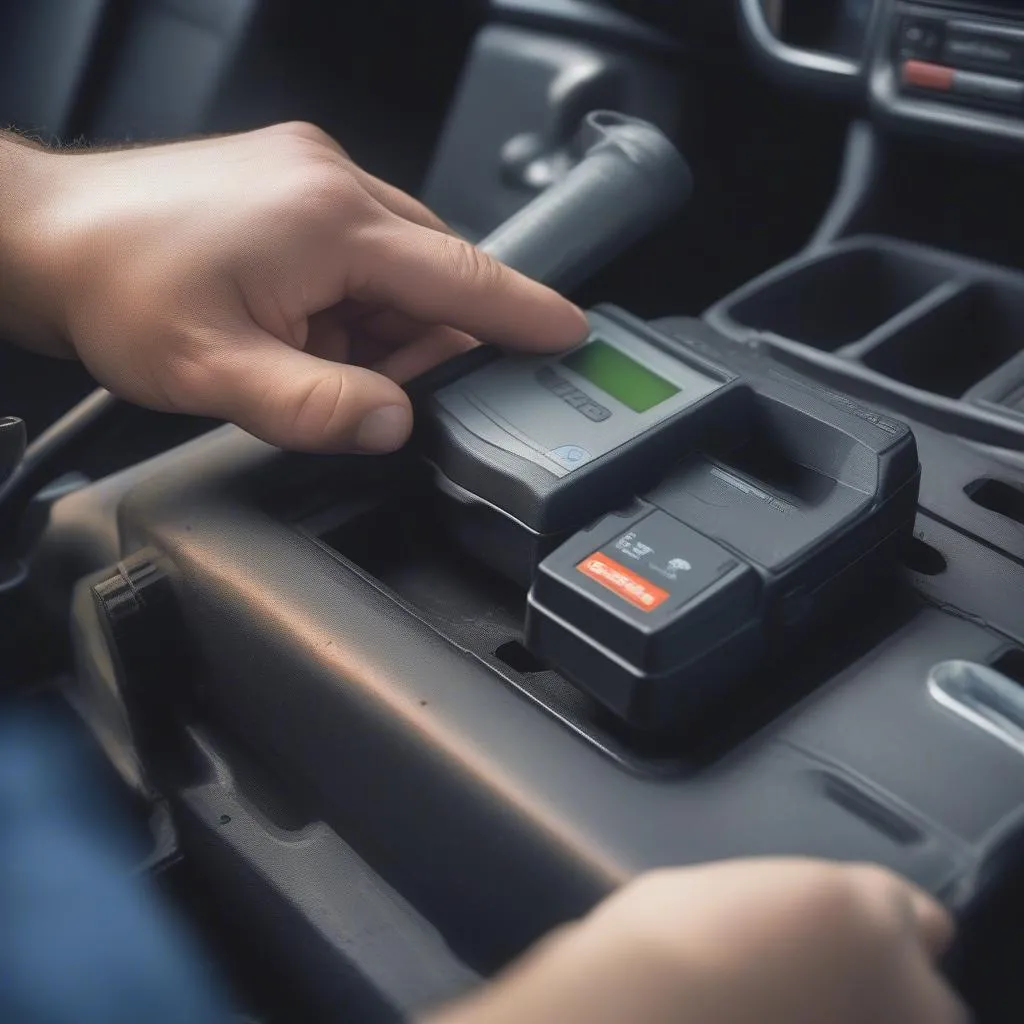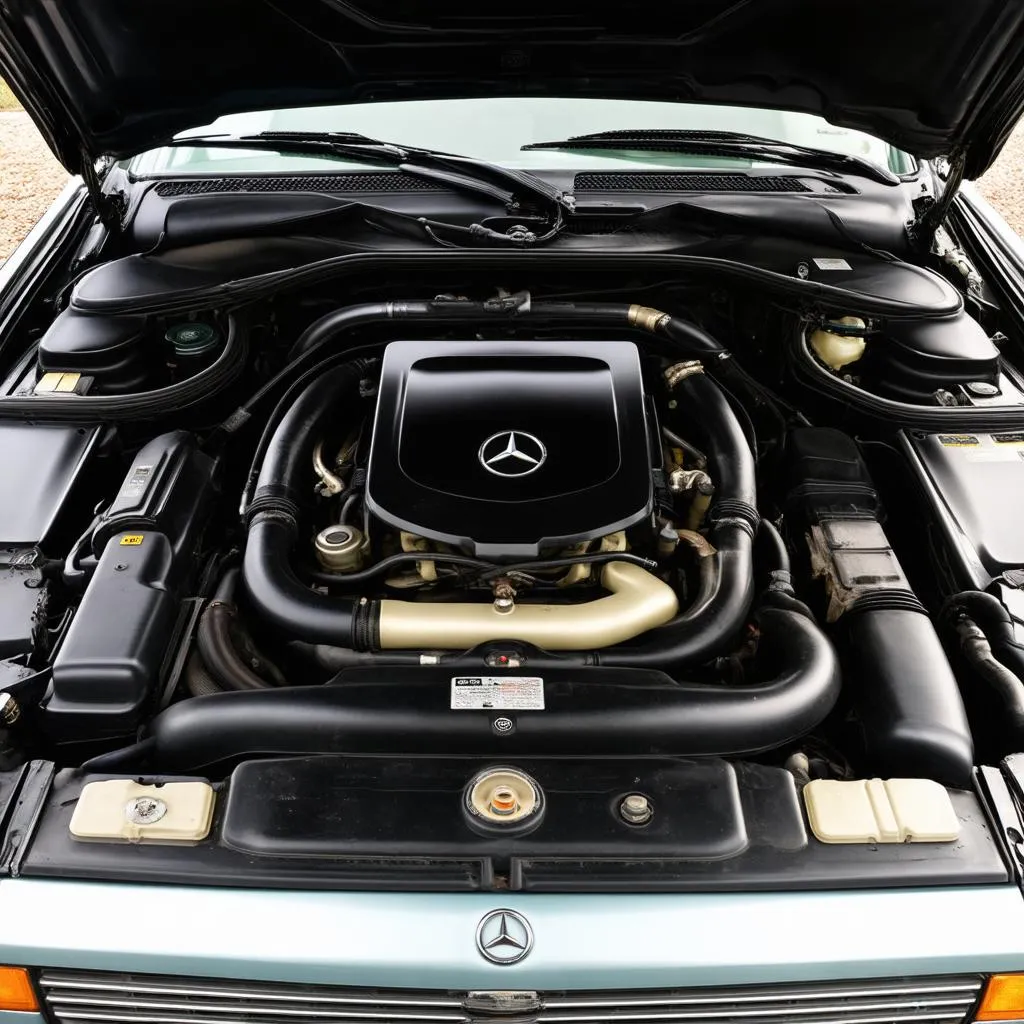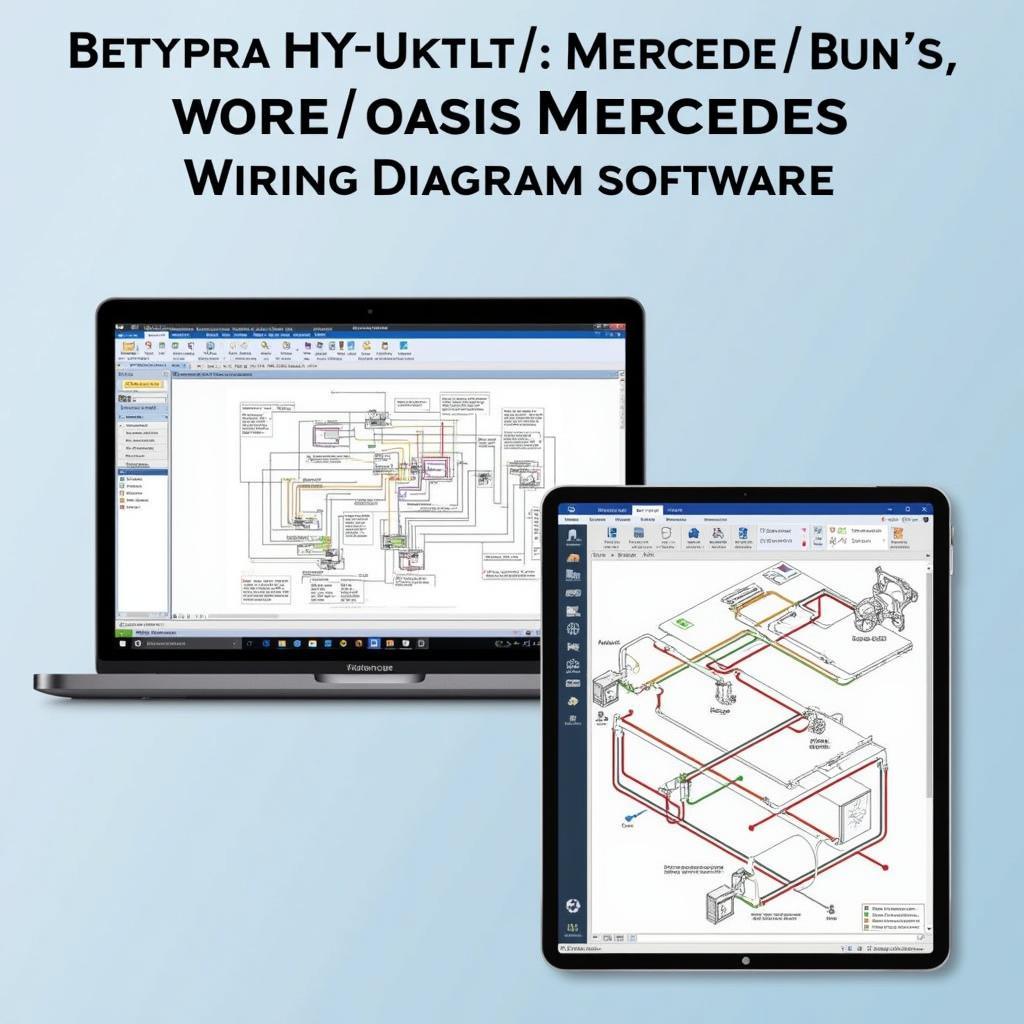Is your ABS light glaring at you from your 1995 Mercedes E320’s dashboard? Don’t panic, it’s a common issue, and often it’s something you can address without needing a mechanic. This guide will take you through the common causes, symptoms, and fixes for ABS problems in your E320.
Why is My ABS Light On?
The ABS (Anti-lock Braking System) is a critical safety feature that prevents your wheels from locking up during hard braking. When your ABS light illuminates, it means the system has detected a fault and has been temporarily disabled. Here’s what commonly triggers that light in a 1995 E320:
- Wheel Speed Sensors: These sensors at each wheel monitor wheel speed. A faulty sensor, damaged wiring, or even dirt buildup can disrupt the signal, triggering the ABS light.
- ABS Control Module: This module is the brain of the ABS system. Over time, it can experience electrical issues or malfunctions, leading to a system shutdown.
- Hydraulic Control Unit (HCU): The HCU manages the brake fluid pressure to each wheel. Internal valve problems or leaks within this unit can also cause ABS issues.
- Low Brake Fluid: Your ABS system relies on proper brake fluid levels. If your fluid is low, it could be the culprit behind the warning light.
Diagnosing the Problem
Before you start throwing parts at your E320, it’s crucial to pinpoint the exact cause of the ABS problem. Here’s how:
- Check Your Brake Fluid: This is the easiest step. If your fluid is low, top it up to the recommended level.
- Visual Inspection: Carefully examine the wiring harnesses leading to each wheel speed sensor for any signs of damage, cuts, or fraying.
- Use an OBD-II Scanner: This handy tool plugs into your car’s diagnostic port and reads trouble codes stored by the ECU (Engine Control Unit). These codes provide more specific information about the ABS problem.
Expert Tip: “Using a reliable OBD-II scanner is key to accurate diagnosis,” says automotive expert Michael Carter, author of “Modern Automotive Diagnostics.” “It’s a worthwhile investment for any DIYer.”
Tools and Parts You Might Need
- OBD-II Scanner (capable of reading ABS codes)
- Replacement wheel speed sensor(s)
- Brake cleaner
- Digital multimeter (for testing sensors)
- Wrench set
- Jack and jack stands
- Safety glasses and gloves
Fixing Your ABS System
1. Addressing Wheel Speed Sensor Issues:
- Cleaning: Often, simply cleaning the sensor can resolve the problem. Disconnect the sensor, use brake cleaner and a soft cloth to remove any dirt or debris.
- Testing: Use a multimeter to test the sensor’s resistance. If it’s out of spec, you’ll need a replacement.
- Replacement: If cleaning and testing don’t work, replace the faulty sensor.
2. Dealing with the ABS Control Module:
- Inspection: Inspect the module for any signs of damage, loose connections, or corrosion.
- Testing: Testing the module often requires specialized equipment. You might want to consult a mechanic or an auto electrician for this step.
- Replacement/Repair: If the module is faulty, it will need to be replaced or repaired. This is often a job best left to professionals.
3. Hydraulic Control Unit Problems:
- Inspection: Check for any visible leaks around the HCU.
- Professional Help: Internal HCU issues are complex. It’s best to consult a qualified mechanic for diagnosis and repair.
 Close-up of a mechanic's hand holding a car wheel speed sensor
Close-up of a mechanic's hand holding a car wheel speed sensor
FAQs: ABS in Your 1995 E320
Q: Can I still drive my car with the ABS light on?
A: While your car will still brake, the ABS function will be deactivated. This means your wheels could lock up under hard braking, increasing stopping distance and the risk of skidding.
Q: How much does it cost to fix an ABS problem?
A: Costs vary depending on the cause and whether you DIY or go to a mechanic. Wheel speed sensor replacements can range from $50 to $200 (DIY), while module or HCU repairs can be significantly more expensive.
Q: My ABS light comes on intermittently. What could be wrong?
A: Intermittent issues are often caused by loose connections, a failing sensor, or even a damaged wire that makes contact only at certain times.
Q: What are some reliable OBD-II scanners that can diagnose ABS issues on my E320?
A: Many reputable brands offer scanners that can read ABS codes. Consider checking out options from Cardiagtech, as they specialize in automotive diagnostic equipment.
 A mechanic plugs an OBD-II scanner into a car's diagnostic port
A mechanic plugs an OBD-II scanner into a car's diagnostic port
Conclusion
Troubleshooting your 1995 Mercedes E320’s ABS system doesn’t have to be daunting. By following this guide, you can identify the root of the problem and potentially save yourself a trip to the mechanic. Remember, a functioning ABS system is vital for your safety on the road.



